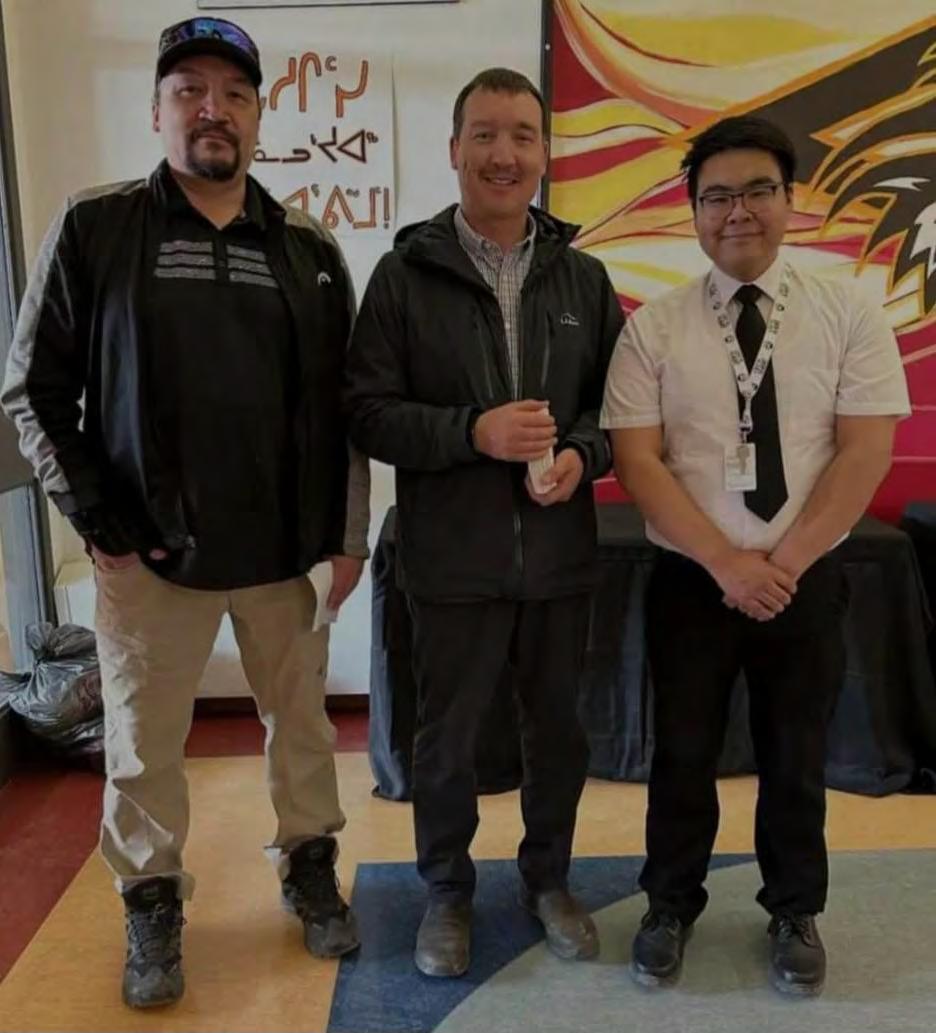
2 minute read
Logging the miles in the sky
Arviat pilot looks ahead to more experienced days

By Darrell Greer Northern News Services
Arviat’s Kelly Owlijoot isn’t losing any of his passion for flying as he slowly builds his hours behind the controls of a helicopter.
Owlijoot received his aviation document allowing him to fly for employment in August of 2022.
He said the pace has been slow since then, with the only time he took to the air being a six-week period flying tourists out of Churchill to see polar bears.
“A lot of the tourists were really excited to get the chance to see the bears,” said Owlijoot.
“Most of them were from outside the country and it was their first chance to see polar bears, so they were pretty stoked to have the opportunity.
“Many of them were well-to-do individuals, such as retired doctors, medical researchers and things like that.
“It was cool to have the chance to talk to them about what they used to do, or still do in some cases, on our way to Churchill.”
Owlijoot said winter can be a slow time for helicopter work.
He said even when work does arise, the helicopter companies prefer higher-end pilots with more experience and plenty of hours behind the controls.
“A lot of that has to do with the fact if the helicopter breaks down it takes more experienced pilots to know exactly what to do in that situation.
“Another reason there’s less opportunity to fly is that there’s forest fires in the spring and summer that require helicopters to help fight them, but there’s none of that during the winter.
“And, of course, there’s the weather itself. With the type of helicopter I was training in (Bell 206B Jet Ranger) , I wasn’t able to fly if the temperatures hit -32 C or colder.”
Owlijoot is currently looking forward to returning to Churchill this coming month so spend another month, or so, flying tourists.
He said he’ll be flying along the coast spotting polar bears and beluga whales for the visitors.
“I’m also kind of hoping other odd jobs will come-up, sooner or later, that will take me to Arviat or another area in the Kivalliq region.
“I haven’t gotten to make a flight anywhere in the Kivalliq region yet. I often get pretty close to Arviat, maybe a 90-minute-trip away, but haven’t made it there yet.
“So, hopefully, there will be some work that will take me there soon.”
Owlijoot said low-time pilots do the easier jobs first.
He said that includes tourism and the transportation of people from one place to another.
“After you get more hours of flying and experience, you get to do other stuff like long-line slinging or short-line slinging, taking cargo to exploration camps, hunting camps or whatever.
“I’ve had training in both and know the basics of it, but I still need to get in a bit more flying time to get used to it.
“You’ve been studying hard for 18 months, or so, and you get so used to operating the helicopter, so it becomes a lot like riding a bike.
“But if you haven’t flown in a few months, a more experienced helicopter pilot will fly with you for a bit just to make sure that everything is still good.”
There’s one area of helicopter flying that Owlijoot is especially looking forward to one day taking part in.
He said search and rescue is so important in the Kivalliq, that he looks forward to the day he might play a vital role in saving someone’s life.
“About a month ago, there was a hunter from Arviat who was stuck out on the land for about nine days.


“A helicopter played a crucial role in finding that man, and I’d really like to do that one day and help the people in Nunavut that way.
“Eventually, I’d like to take part in search and rescue and maybe take part in animal surveys.
“I really enjoy flying and plan to keep doing this for quite awhile.”








